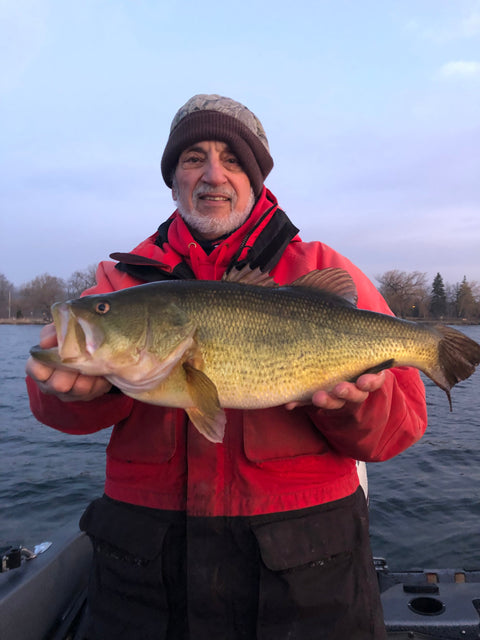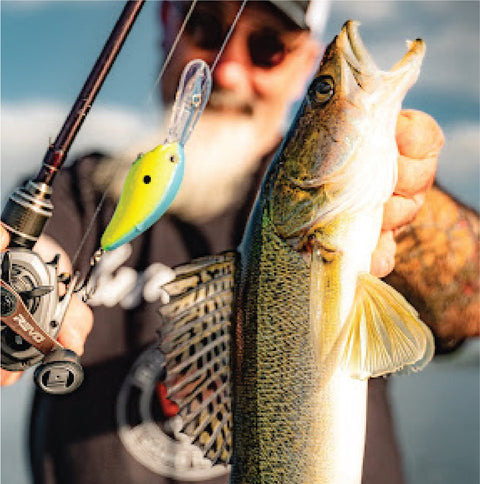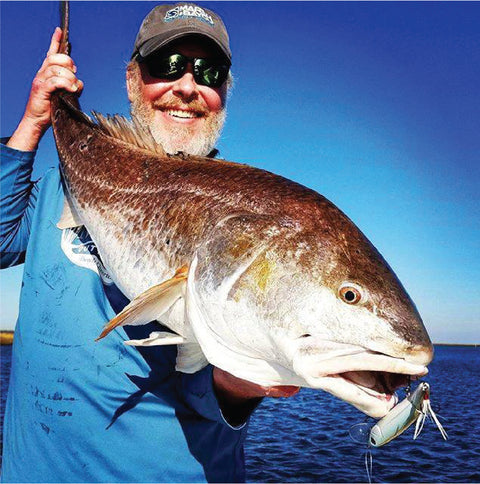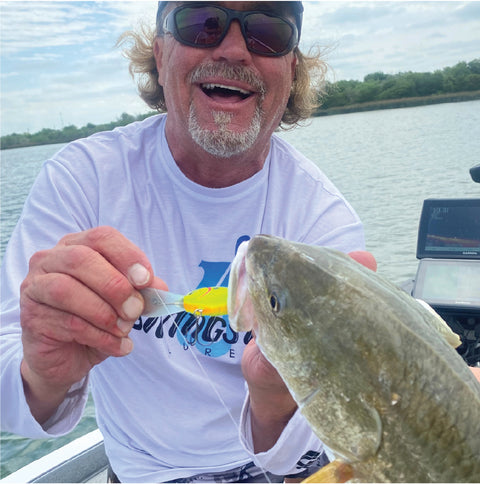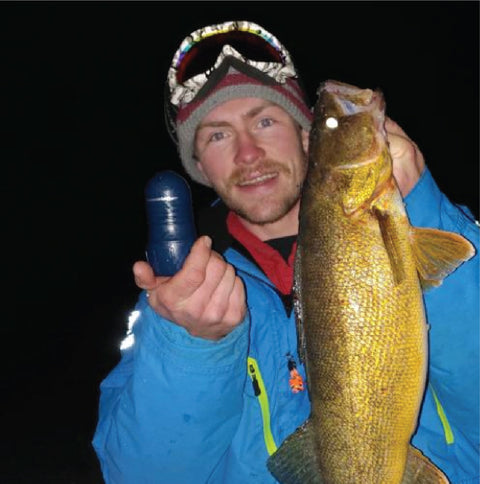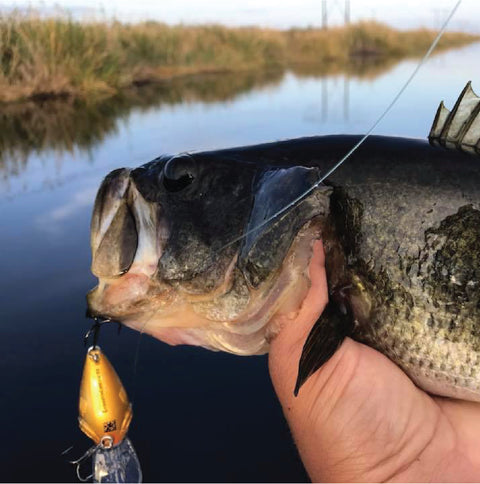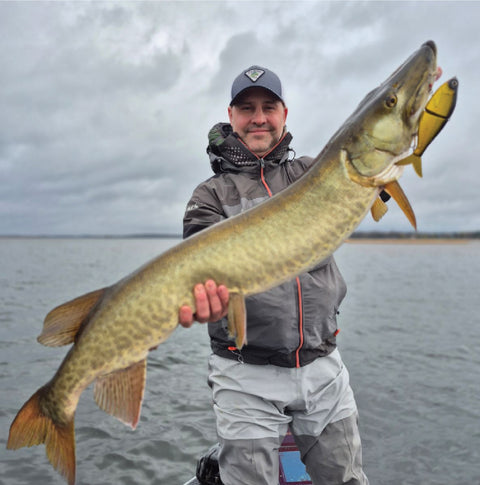Tiger Muskie Fishing in Colorado: How to Catch Tiger Muskie in Colorado

Tiger muskies—the hybrid offspring of a female muskellunge and a male northern pike—have earned a cult following among serious predator anglers. Long popular in the Midwest, this sterile hybrid has taken hold in select Colorado reservoirs thanks to stocking by Colorado Parks and Wildlife (CPW). With deep, clear lakes, limited pressure, and rapidly growing fish, Colorado offers one of the most overlooked trophy tiger muskie fisheries in the West.
What Makes a Tiger Muskie Unique?
Tiger muskies are bred in hatcheries and stocked as a biological control tool to manage invasive or nuisance fish like suckers. These fish grow fast, strike hard, and fight dirty—often reaching sizes of 40+ inches within a few years. Because they can’t reproduce, their populations are entirely maintained through state stocking programs. In Colorado, that includes well-known waters like Gross Reservoir, Harvey Gap, and Shadow Mountain Reservoir.
Best Tiger Muskie Lakes in Colorado
Colorado offers several quality fisheries for tiger muskies. Here are the top destinations based on CPW stocking and angler reports:
- Gross Reservoir (Boulder County): A deep, clear lake stocked to control sucker populations. Steep drop-offs, rocky points, and cold water make it ideal for muskie ambush tactics.
- Harvey Gap Reservoir (Garfield County): A known tiger muskie hotspot on the Western Slope. Limited shore access favors boat anglers. Look for fish cruising weedlines and open flats.
- Shadow Mountain Reservoir (Grand County): Recently stocked with over 13,000 tiger muskies. Cold, high-elevation water and excellent forage should make this a long-term trophy fishery.
- Evergreen Lake, Pinewood, and Big Creek Reservoirs: Front Range waters with consistent stocking; solid options for urban anglers.
- Lower Big Creek Lake: Notable for producing large tiger muskies. Remote access and high elevation keep pressure low.
Regulations
- Minimum size: 36 inches
- Daily bag limit: 1 fish
- Catch-and-release strongly encouraged for all fish over 40 inches
- Some waters may have tackle restrictions or access limitations. Always check the latest CPW regulations.
Understanding Tiger Muskie Behavior in Colorado
Tiger muskies in Colorado follow seasonal movements and are influenced by weather, forage, and water temperature:
- Spring: Fish move into warming shallows and weed edges post-ice out.
- Summer: Look for muskies suspended over structure, along deep weedlines, or roaming flats.
- Fall: Trophy-class fish often stage near steep breaklines and feed aggressively ahead of winter.
- Winter: Cold, but not impossible. Very slow presentations with soft plastics can still produce strikes.
Wind, cloud cover, and barometric shifts often trigger short feeding windows. Dawn, dusk, and pre-frontal conditions are key. Colorado muskies aren’t typically pressured, but they’re still smart—move methodically and always watch for follows.
Locating Tiger Muskies: Structure Matters
Colorado lakes may lack dense vegetation, but they offer ideal ambush terrain. Focus on:
- Steep rock transitions
- Windblown points
- Drop-offs adjacent to shallow flats
- Mid-lake humps and submerged structure
Use electronics to find baitfish and mark suspended fish. Polarized sunglasses help spot followers. When you raise a muskie, note the location—they often stay in the area for days.
Best Lures for Colorado Tiger Muskie Fishing
Jerkbaits
-
Titan: A dive-and-rise hybrid with a natural wobble and strong triggering ability.

Bucktails
-
Bad Boy Bucktail: Designed to cover water fast, with nickel blades and chartreuse or red skirts to maximize visibility in clear or stained water. Great hooking ratio and strong vibration signature.

Crankbaits
- Striker: Shad-profile crankbait that excels with pause-and-rise retrieves.
- Pounder: A deep-diving crank ideal for probing rock edges and steep drops where big tigers lie in wait.
Soft Plastics
-
Magnus: Swimbait with a large body and adjustable weight system. Ideal for deep or cold water.

-
Kraken: Hybrid hard/soft jerkbait with erratic action and a wide glide.

Topwaters
-
Big Makk: Loud plopping surface bait with dual rotating props—best during low light or overcast days.

Pro Tip: Visibility beats imitation. Focus on flash, silhouette, and contrast—not just matching local forage.
Hooksets, Gear, and Landing
- Rod: 8'6" to 9' medium-heavy casting rods
- Line: 65–80 lb braid or 25–30 lb mono for clear water
- Leader: Wire or 100 lb fluorocarbon
- Always set the hook hard—use your arms and shoulders. Tiger muskies have thick bony mouths.
Essential Tools:
- Long pliers and jaw spreaders
- Bolt cutters (for deep hook removal)
- Heavy-duty net with rubber coating
- First aid kit
- Boat pole for lure retrieval
Success Tips
- Figure-8 only when needed: Use when visibility is low or you spot a follower, tiger muskies rarely come into figure-8's like a pure muskie.
- Revisit raised fish: Come back later with a different angle or lure.
- Rotate spots: Don’t over-pressure good water.
- Stay sharp mentally: You may go hours without a bite—pattern recognition wins.
Final Cast
Tiger muskie fishing in Colorado is an underutilized trophy pursuit. With deep water, clear visibility, and expanding stocking efforts, this is one of the West’s most exciting predator opportunities. If you’re looking for the thrill of a lifetime, get on the water with the right tools, the right mindset, and the right baits from Livingston Lures.
Check out LivingstonLures.com to gear up with the full tiger muskie lineup—from search baits to strike triggers, they have every situation covered.
Steven Paul Muskie and Pike Expert

Colorado Tiger Muskie Fishing FAQ
Q: What is a tiger muskie?
A tiger muskie is a sterile hybrid of a female muskellunge and a male northern pike. These fish combine the speed and aggression of a pike with the size and power of a muskie—and they grow fast in Colorado’s clear, cold waters.
Q: Where can I fish for tiger muskies in Colorado?
Tiger muskies are stocked by Colorado Parks and Wildlife in select reservoirs including:
- Gross Reservoir
- Harvey Gap Reservoir
- Shadow Mountain Reservoir
- Pinewood Reservoir
- Evergreen Lake
- Big Creek Lake
- Lower Big Creek Lake
Q: Why are tiger muskies stocked in Colorado?
CPW uses tiger muskies for biological control, primarily to manage nuisance species like white suckers. They also provide a high-quality, limited-entry trophy fishery.
Q: What are the regulations for tiger muskie fishing in Colorado?
- Minimum size limit: 36 inches
- Daily bag limit: 1 fish
- Catch-and-release is strongly encouraged, especially for fish over 40 inches
Always check current CPW regulations for lake-specific rules.
Q: Are tiger muskies dangerous to native fish?
No. CPW data shows tiger muskies target abundant forage like suckers and stocked trout. Their impact on native fish populations is minimal, especially in reservoirs with strong prey bases.
Q: When is the best time to catch tiger muskies in Colorado?
Late spring through fall is prime, especially when water temps climb above 60°F. Look for activity during low light, storm fronts, and when wind pushes bait to shoreline structure.
Q: What gear should I use?
- Rod: 8’6” to 9’ heavy action baitcasting rod
- Line: 80 lb braid Next Level Braid is one of the best on the market.
- Leader: 100 lb fluorocarbon or wire
Essential tools include pliers, bolt cutters, a rubberized net, and jaw spreaders.
Q: What are the best baits for tiger muskies in Colorado?
Livingston Lures makes several tiger muskie-specific lures:
- Search baits: Bad Boy Bucktail, Deep Impact, Pounder
-
Targeted baits: Jerk Master, Titan, Magnus, Kraken, Big Makk
Use baits that create sound, flash, and contrast—presentation often matters more than exact profile.
Q: Do figure-8s work in Colorado?
Yes, but use them selectively. Clear water lets you see follows, so employ figure-8s when visibility drops or you know a fish is nearby.
Q: Can tiger muskies be caught in winter?
Yes, though bites are rare. Slow-moving soft plastics like Kraken fished near bottom structure can tempt lethargic muskies under ice or in cold water.
Q: Are they hard to catch?
They can be. Tiger muskies are known as the "fish of 10,000 casts," but Colorado’s low-pressure waters make them more accessible than many expect. Success depends on persistence, structure knowledge, and smart presentation.


